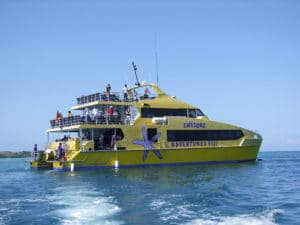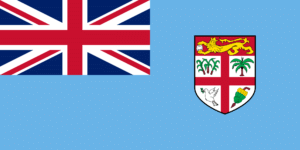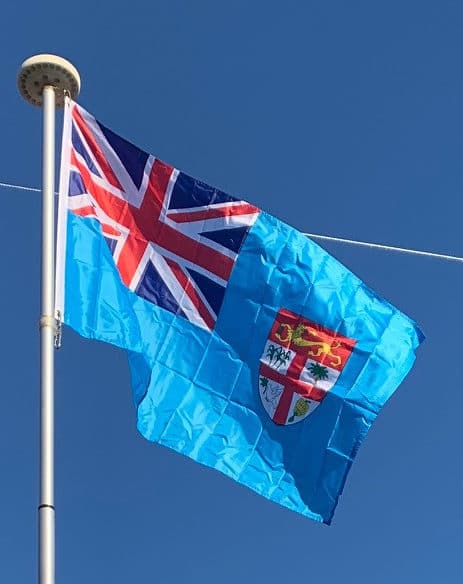Taxis are licensed by the LTA and operate widely all over the country. Apart from urban, town-based taxis, there are others that are licensed to serve rural or semi-rural areas. The elderly and Government welfare recipients are given a 20% discount on their taxi fares.

Inter-island ferries provide services between Fiji’s principal islands and large vessels operate roll-on-roll-off services, transporting vehicles and large amounts of cargo between the main island of Viti Levu and Vanua Levu, and other smaller islands.
Flag of Fiji:
The national flag of Fiji (Fijian: kuila mai Viti) was adopted on 10 October 1970. The state arms have been slightly modified but the flag has remained the same as during Fiji’s colonial period. It is a defaced sky-blue “Blue Ensign” (the actual Blue Ensign version of the flag is the Government ensign). It has remained unchanged since Fiji was declared a republic in 1987, despite calls from some politicians for changes.
A plan to change the flag, announced by Prime Minister Frank Bainimarama in 2013, was abandoned in August 2016.

The flag’s bright blue background symbolizes the Pacific Ocean, which plays an important part in the lives of the islanders, both in terms of the fishing industry, and the huge tourist trade. The Union Jack reflects the country’s links with the United Kingdom. The shield is derived from the country’s coat of arms, which was granted by Royal Warrant in 1908. It is a white shield with a red cross and a red chief (upper third of a shield). The images depicted on the shield represent agricultural activities on the islands, and the historical associations with the United Kingdom. At the top of the shield, a British lion holds a cocoa pod between its paws. The first quarter is sugar cane, second quarter is a coconut palm, the third quarter is a dove of peace, and the fourth quarter is a bunch of bananas.
In his New Year’s Day address in 2013, Prime Minister Frank Bainimarama announced that the flag would soon be changed so as “to reflect a sense of national renewal, to reinforce a new Fijian identity and a new confidence in being Fijian on the global stage”. The change in the flag would accompany the adoption of a new Constitution, intended by Fiji’s military leader (who came to power in a coup in December 2006) to establish a “one person, one vote”, non-racial and secular democracy under military oversight. The country, a republic, had removed Queen Elizabeth II from its currency a few weeks earlier.
However, on 17 August 2016, Bainimarama publicly announced that the government was abandoning plans to change the flag. He read out a statement saying: “While I remain convinced personally that we need to replace some of the flag’s colonial symbols with a genuinely indigenous expression of our present and our future, it has been apparent to the Government since February that the flag should not be changed for the foreseeable future”. The flag’s popularity had been boosted by the country winning its first ever Olympic gold medal under its banner in the 2016 Summer Olympics. The decision to retain the current flag was welcomed by opposition parties.
